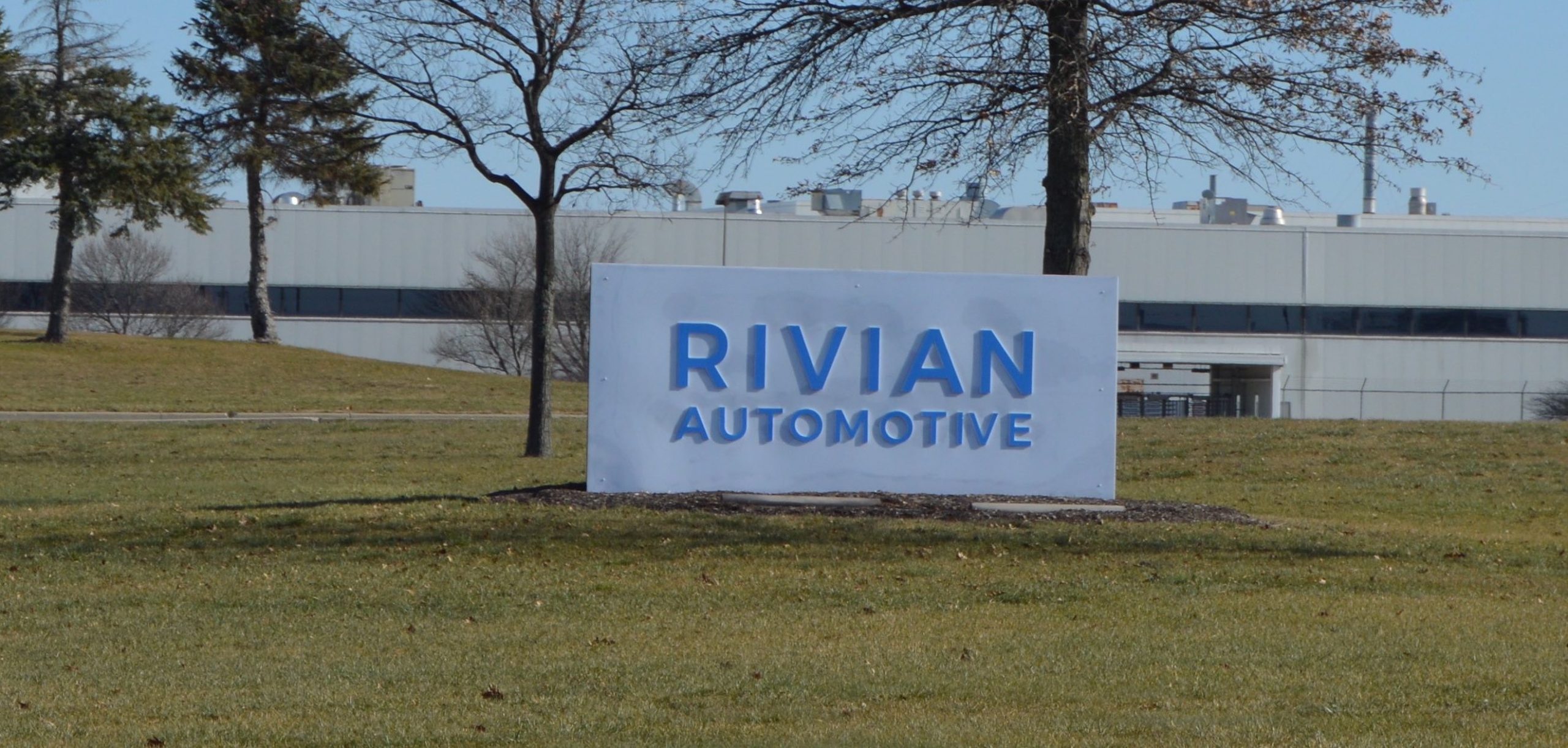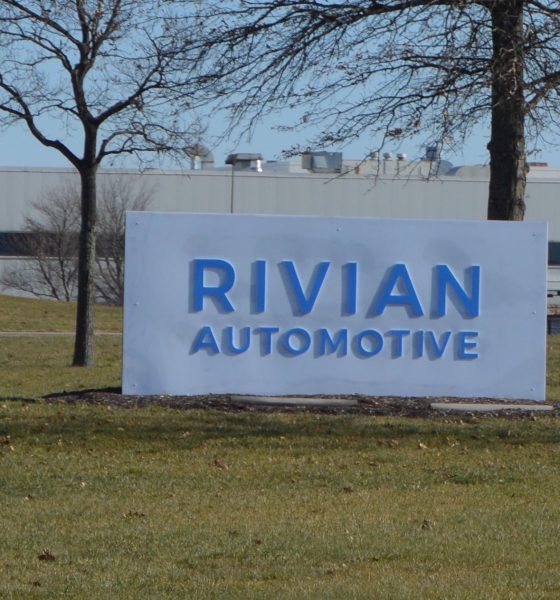

News
Stealth EV startup Rivian adds McLaren and Nike execs to lead development
Rivian, the stealthy, Michigan-based electric vehicle (EV) startup, is taking large steps forward in their new vehicle development program. The company recently added two new executives, Mark Vinnels and Rob Williams.
Mark Vinnels joined Rivian in November as Executive Director of Engineering and Programs, and oversees the development of Rivian’s vehicle platform. Vinnels was formerly the Executive Director of Product Development and Programme Director at McLaren Automotive. Vinnels joined McLaren in 2004 to lead the development of McLaren’s first road car since the infamous F1. Before joining McLaren, Vinnels was head of Lotus’s new vehicle programs and oversaw the Elise, Exige, and Europa new vehicle lines. Vinnels is also credited for his instrumental role in the development of GM’s Family 1 engine program.

Mark Vinnels, Rivian’s new Executive Director of Engineering & Programs at Rivian Automotive. (Credit McLaren Automotive)
While at McLaren, Vinnels helped the company grow its engineering division from roughly 50 engineers to 550 and significantly increased its vehicle lineup.
Rivian’s team also includes another former McLaren executive, Anthony Sheriff, who joined Rivian’s Board of Directors in 2016. Sheriff was the Managing Director of McLaren Automotive from 2003-2013, a period in which McLaren created a road car division in addition to the company’s rich history in the automotive racing arena. Sheriff was an executive at Fiat before his tenure at McLaren and also sits on the Board of Directors for electric supercar manufacturer Rimac.
Also joining Rivian is Rob Williams as Chief Creative Officer. Williams carries experience from both the automotive industry and the footwear industry. He was most recently a Senior Design Director of Footwear at Nike and spent four-and-a-half years at Chrysler. During his time as a product designer at Chrysler, he led several designs of Chrysler SUVs and Dodge Trucks.
Williams joins Jeff Hammoud, Director of Vehicle Design. Hammoud has extensive experience at Fiat-Chrysler and left the company as Chief of Design of the Jeep Brand. Hammoud joined Rivian in May 2017, followed by Williams in June.
Based on a combination of the design team’s backgrounds and patents released by Rivian last summer, it appears that Rivian’s first vehicle could be some sort of SUV. An in-depth analysis of Rivian’s design team members’ LinkedIn profiles reveals that nearly half of the team has experience with Fiat Chrysler Automotive (Formerly Chrysler), with many specializing in SUV/Truck designs.

Rivian’s Patent for “Reconfigurable Electric Vehicles”. It’s worth noting that patents do not usually reflect a vehicle’s actual planned design, rather the mechanism that the company is patenting. (Credit: Public Patent Filing)
Rivian currently has 225 employees, up from 115 at the start of the year. Other notable additions to Rivian’s team include 15 former Faraday Future employees. Faraday Future is nearly defunct after it continued to miss its wildly ambitious goals and saw its main financier’s global expansion fall apart. Most of the team from Faraday is working on Rivian’s autonomous driving technology or other highly technical roles.
The timeline for Rivian’s massive 2.6 million-square-foot manufacturing facility on the west side of Normal is still unknown. Rivian purchased the factory in January 2017 for $16 million, including all of the contents in the factory.
While Rivian hasn’t revealed many details about the development of its all-electric vehicle platform, the company revealed today that it has received a large strategic investment from New York-based Sumitomo Corporation of Americas (SCOA).
Rivian’s CEO RJ Scaringe couldn’t comment directly on the details of the investment, but did say the following to AdaptBN: “We are honored and excited to have Sumitomo as a strategic investor. Their global reach, expertise, and network in the automotive sector will help us in executing our vision. This investment reflects the result of our team’s hard work in developing our technology and products.”
Due to the level of mystery surrounding Rivian’s plans and product line, local residents and officials have begun comparing it to the likes of “Willy Wonka’s Chocolate Factory.” But only time will tell if Rivian holds a golden ticket to the future.

Elon Musk
Elon Musk’s X will start using a Tesla-like software update strategy
The initiative seems designed to accelerate updates to the social media platform, while maintaining maximum transparency.

Elon Musk’s social media platform X will adopt a Tesla-esque approach to software updates for its algorithm.
The initiative seems designed to accelerate updates to the social media platform, while maintaining maximum transparency.
X’s updates to its updates
As per Musk in a post on X, the social media company will be making a new algorithm to determine what organic and advertising posts are recommended to users. These updates would then be repeated every four weeks.
“We will make the new 𝕏 algorithm, including all code used to determine what organic and advertising posts are recommended to users, open source in 7 days. This will be repeated every 4 weeks, with comprehensive developer notes, to help you understand what changed,” Musk wrote in his post.
The initiative somewhat mirrors Tesla’s over-the-air update model, where vehicle software is regularly refined and pushed to users with detailed release notes. This should allow users to better understand the details of X’s every update and foster a healthy feedback loop for the social media platform.
xAI and X
X, formerly Twitter, has been acquired by Elon Musk’s artificial intelligence startup, xAI last year. Since then, xAI has seen a rapid rise in valuation. Following the company’s the company’s upsized $20 billion Series E funding round, estimates now suggest that xAI is worth tens about $230 to $235 billion. That’s several times larger than Tesla when Elon Musk received his controversial 2018 CEO Performance Award.
As per xAI, the Series E funding round attracted a diverse group of investors, including Valor Equity Partners, Stepstone Group, Fidelity Management & Research Company, Qatar Investment Authority, MGX, and Baron Capital Group, among others. Strategic partners NVIDIA and Cisco Investments also continued support for building the world’s largest GPU clusters.
News
Tesla FSD Supervised wins MotorTrend’s Best Driver Assistance Award
The decision marks a notable reversal for the publication from prior years, with judges citing major real-world improvements that pushed Tesla’s latest FSD software ahead of every competing ADAS system.

Tesla’s Full Self-Driving (Supervised) system has been named the best driver-assistance technology on the market, earning top honors at the 2026 MotorTrend Best Tech Awards.
The decision marks a notable reversal for the publication from prior years, with judges citing major real-world improvements that pushed Tesla’s latest FSD software ahead of every competing ADAS system. And it wasn’t even close.
MotorTrend reverses course
MotorTrend awarded Tesla FSD (Supervised) its 2026 Best Tech Driver Assistance title after extensive testing of the latest v14 software. The publication acknowledged that it had previously criticized earlier versions of FSD for erratic behavior and near-miss incidents, ultimately favoring rivals such as GM’s Super Cruise in earlier evaluations.
According to MotorTrend, the newest iteration of FSD resolved many of those shortcomings. Testers said v14 showed far smoother behavior in complex urban scenarios, including unprotected left turns, traffic circles, emergency vehicles, and dense city streets. While the system still requires constant driver supervision, judges concluded that no other advanced driver-assistance system currently matches its breadth of capability.
Unlike rival systems that rely on combinations of cameras, radar, lidar, and mapped highways, Tesla’s FSD operates using a camera-only approach and is capable of driving on city streets, rural roads, and freeways. MotorTrend stated that pure utility, the ability to handle nearly all road types, ultimately separated FSD from competitors like Ford BlueCruise, GM Super Cruise, and BMW’s Highway Assistant.
High cost and high capability
MotorTrend also addressed FSD’s pricing, which remains significantly higher than rival systems. Tesla currently charges $8,000 for a one-time purchase or $99 per month for a subscription, compared with far lower upfront and subscription costs from other automakers. The publication noted that the premium is justified given FSD’s unmatched scope and continuous software evolution.
Safety remained a central focus of the evaluation. While testers reported collision-free operation over thousands of miles, they noted ongoing concerns around FSD’s configurable driving modes, including options that allow aggressive driving and speeds beyond posted limits. MotorTrend emphasized that, like all Level 2 systems, FSD still depends on a fully attentive human driver at all times.
Despite those caveats, the publication concluded that Tesla’s rapid software progress fundamentally reshaped the competitive landscape. For drivers seeking the most capable hands-on driver-assistance system available today, MotorTrend concluded Tesla FSD (Supervised) now stands alone at the top.
News
Elon Musk’s Grokipedia surges to 5.6M articles, almost 79% of English Wikipedia
The explosive growth marks a major milestone for the AI-powered online encyclopedia, which was launched by Elon Musk’s xAI just months ago.

Elon Musk’s Grokipedia has grown to an impressive 5,615,201 articles as of today, closing in on 79% of the English Wikipedia’s current total of 7,119,376 articles.
The explosive growth marks a major milestone for the AI-powered online encyclopedia, which was launched by Elon Musk’s xAI just months ago. Needless to say, it would only be a matter of time before Grokipedia exceeds English Wikipedia in sheer volume.
Grokipedia’s rapid growth
xAI’s vision for Grokipedia emphasizes neutrality, while Grok’s reasoning capabilities allow for fast drafting and fact-checking. When Elon Musk announced the initiative in late September 2025, he noted that Grokipedia would be an improvement to Wikipedia because it would be designed to avoid bias.
At the time, Musk noted that Grokipedia “is a necessary step towards the xAI goal of understanding the Universe.”
Grokipedia was launched in late October, and while xAI was careful to list it only as Version 0.1 at the time, the online encyclopedia immediately earned praise. Wikipedia co-founder Larry Sanger highlighted the project’s innovative approach, noting how it leverages AI to fill knowledge gaps and enable rapid updates. Netizens also observed how Grokipedia tends to present articles in a more objective manner compared to Wikipedia, which is edited by humans.
Elon Musk’s ambitious plans
With 5,615,201 total articles, Grokipedia has now grown to almost 79% of English Wikipedia’s article base. This is incredibly quick, though Grokipedia remains text-only for now. xAI, for its part, has now updated the online encyclopedia’s iteration to v0.2.
Elon Musk has shared bold ideas for Grokipedia, including sending a record of the entire knowledge base to space as part of xAI’s mission to preserve and expand human understanding. At some point, Musk stated that Grokipedia will be renamed to Encyclopedia Galactica, and it will be sent to the cosmos.
“When Grokipedia is good enough (long way to go), we will change the name to Encyclopedia Galactica. It will be an open source distillation of all knowledge, including audio, images and video. Join xAI to help build the sci-fi version of the Library of Alexandria!” Musk wrote, adding in a later post that “Copies will be etched in stone and sent to the Moon, Mars and beyond. This time, it will not be lost.”








